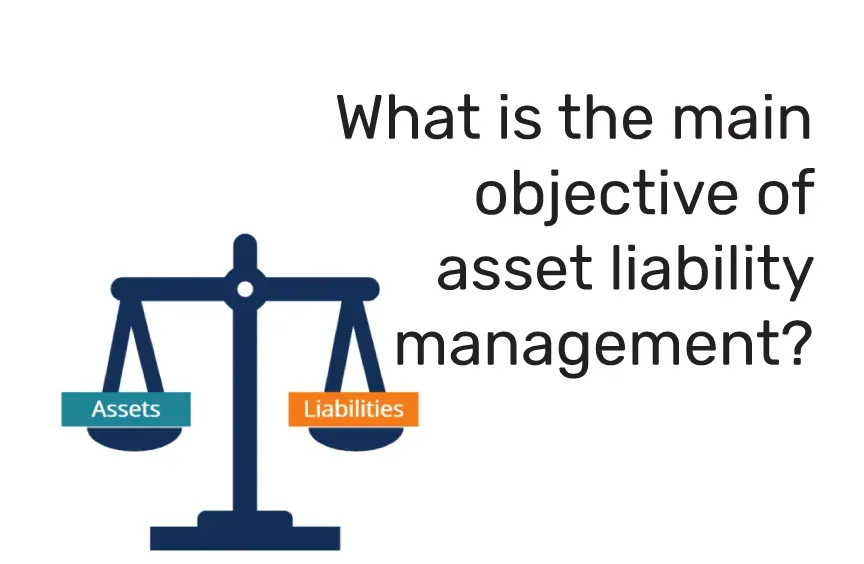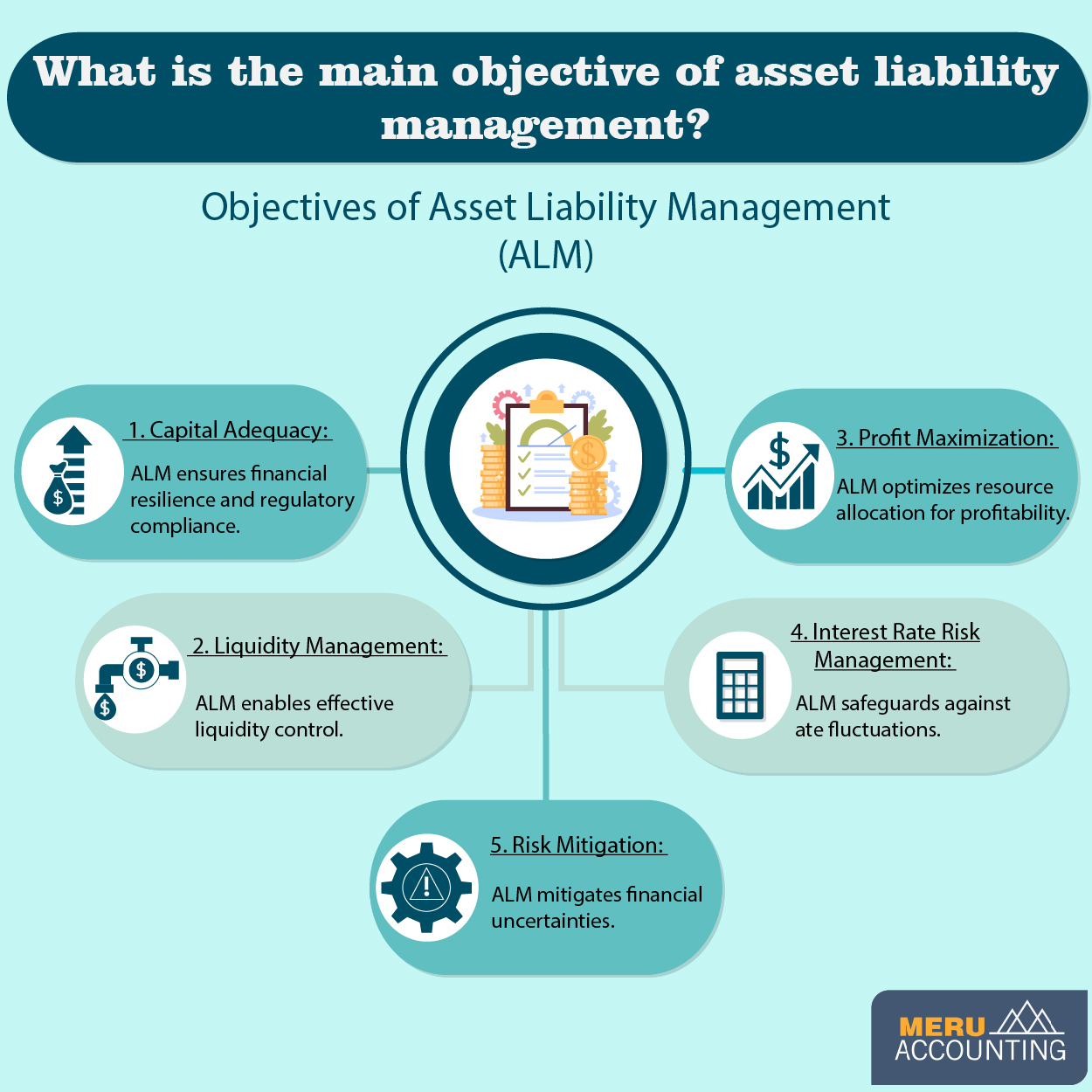What is the main objective of asset liability management?
In the dynamic and ever-changing landscape of financial institutions and businesses, effective Asset Liability Management (ALM) becomes the cornerstone for achieving sustainable growth and success.
ALM assumes a position of prominence, steering companies towards their desired goals with financial prudence. ALM ensures a harmonious interplay between an institution’s assets and liabilities, thereby optimizing financial performance and mitigating risks.
With ALM’s astute guidance in liability management, enterprises sail confidently in the seas of uncertainties, navigating towards stability and triumph in the ever-fluctuating financial waters.
Key objectives of asset liability management:
1. Capital Adequacy:
Sound financial foundations are essential for weathering the storms of economic downturns and regulatory demands. ALM plays a pivotal role in ensuring capital adequacy for financial institutions.
It enables organizations to maintain an appropriate level of capital relative to their risk exposure, thus bolstering their resilience and sustainability.
By adhering to capital adequacy ratios and standards, institutions can inspire confidence among investors, depositors, and regulators, establishing themselves as pillars of strength within the financial ecosystem.
2. Liquidity Management:
Ensuring smooth sailing on the seas of finance, ALM places a strong emphasis on liquidity management. Adequate liquidity is the lifeblood of any organization, enabling it to meet its financial obligations promptly and seize lucrative opportunities.
By meticulously monitoring and projecting cash inflows and outflows, ALM equips institutions with the foresight needed to steer clear of liquidity shortages. Such preparedness enables them to navigate through challenging economic conditions and capitalize on advantageous situations.
3. Profit Maximization:
In the quest for financial prosperity, ALM emerges as a formidable ally in optimizing profitability. This crucial objective revolves around smartly allocating resources to various asset classes, taking into account the institution’s risk tolerance levels.
By identifying and capitalizing on the most lucrative investment opportunities, ALM empowers institutions to generate higher returns on their investments. Through in-depth analysis and data-driven decisions, organizations can leverage ALM’s prowess for liability management, to achieve sustainable growth and long-term financial success.
4. Interest Rate Risk Management:
Within Asset Liability Management involves analyzing the impact of interest rate fluctuations on an institution’s interest-sensitive assets and liabilities.
By conducting stress tests and scenario analyses, ALM professionals assess the institution’s vulnerability to varying interest rate movements.
This enables them to take proactive measures, such as hedging strategies or adjusting the asset-liability mix, to protect against potential adverse effects on profitability and financial stability, ensuring a resilient position in the face of changing interest rate environments.
5. Risk Mitigation:
Asset Liability Management serves as a powerful shield against the uncertainties and volatilities of the financial world. One of its primary objectives is to mitigate financial risks arising from fluctuations in interest rates, credit quality, and market conditions.
By carefully aligning the maturity and cash flows of assets and liabilities, institutions can safeguard themselves from unexpected losses, ensuring a resilient and stable financial position.
ALM empowers organizations to proactively identify potential risks and devise strategies to counter them, fortifying their defenses against economic adversities.
In conclusion, Asset Liability Management (ALM) plays a pivotal role in navigating the financial landscape. Meru Accounting offers tailored ALM services, equipping institutions with risk assessments, optimized structures, and valuable insights to achieve financial objectives with confidence.
Gain a competitive edge with Meru Accounting‘s expertise, ensuring stability and success in today’s dynamic finance market.




